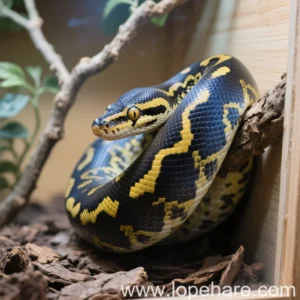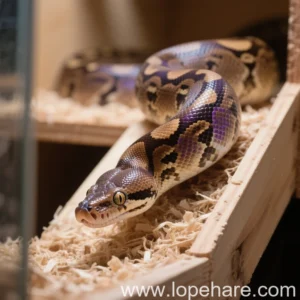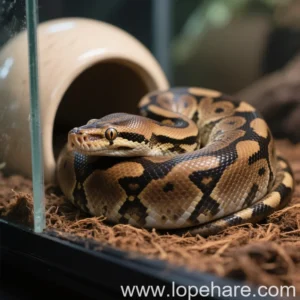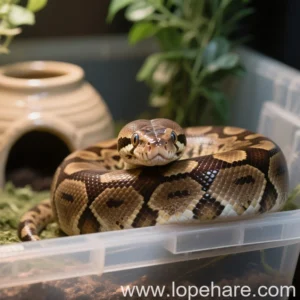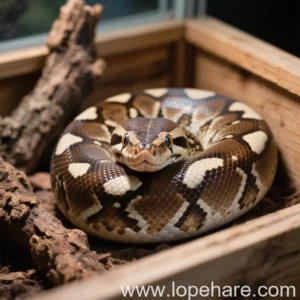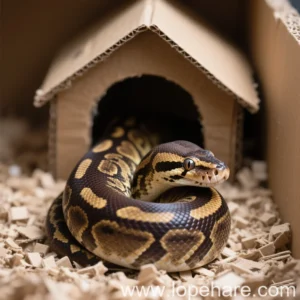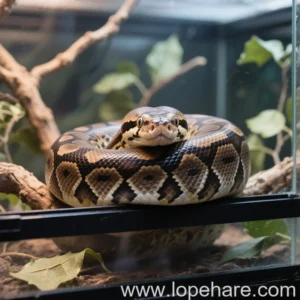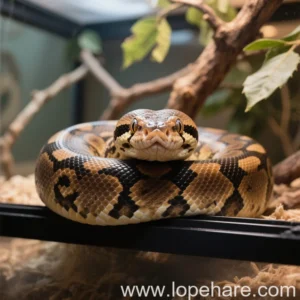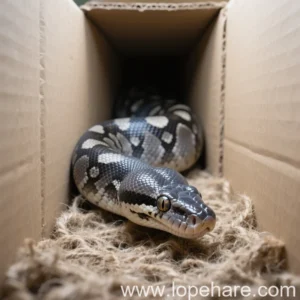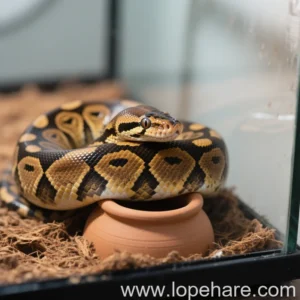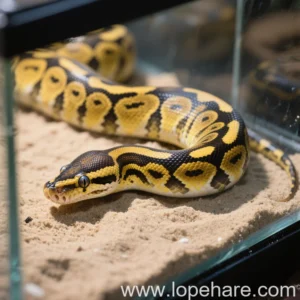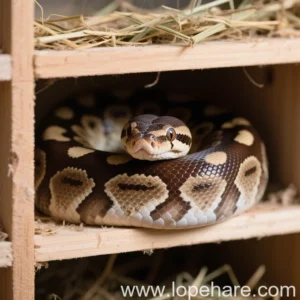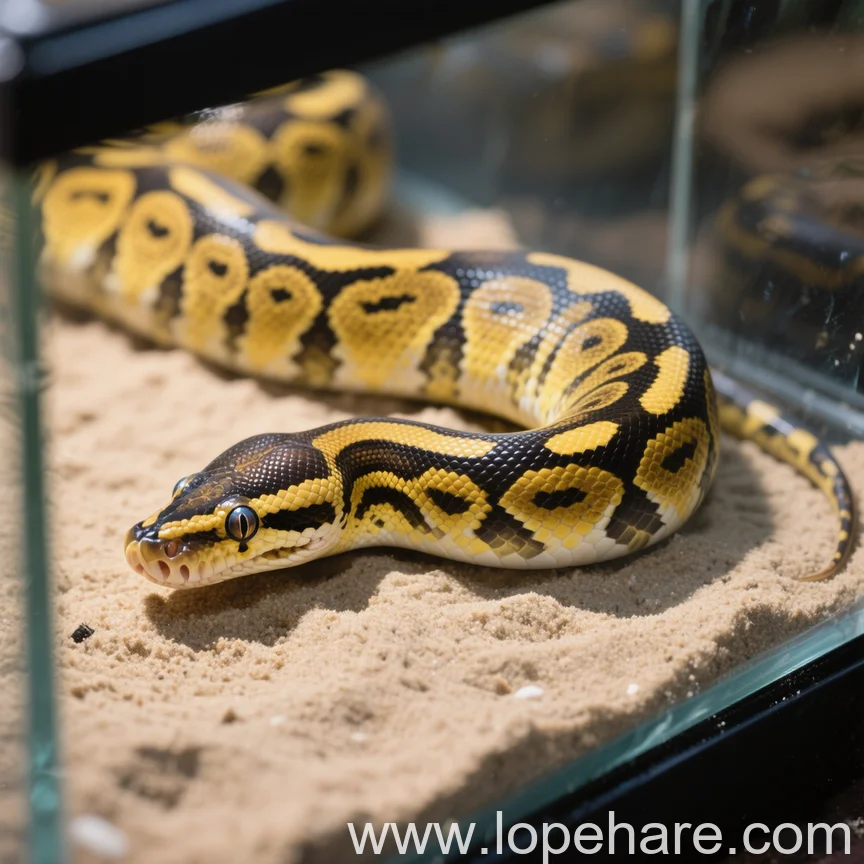
Reptile Husbandry
Ball Python Seasonal Care: Adjusting Habitat for Winter and Summer
At lopehare, our mission is to provide comprehensive, professional insights into caring for niche pets, and the Ball Python (Python regius) is a perennial favorite among reptile enthusiasts. While often considered a beginner-friendly snake, optimal Ball Python care goes beyond the basics. Understanding and adapting their habitat based on the seasons is crucial for their long-term health and well-being. Just like their wild counterparts experience seasonal shifts, providing a captive environment that mimics these changes can significantly improve your pet’s quality of life. This guide will walk you through the necessary adjustments for both the cooler, drier “winter” period and the warmer, wetter “summer” period in their native range.
Natural Cycles and Why They Matter
Ball Pythons originate from West and Central Africa, a region that experiences distinct wet and dry seasons rather than traditional four-season cycles like many temperate climates. The “winter” equivalent is typically a cooler, drier period, while “summer” corresponds to the warmer, more humid rainy season. These environmental shifts in temperature and humidity naturally influence their behavior, metabolism, and reproductive cycles.
While pet Ball Pythons don’t necessarily need to undergo a full brumation (the reptilian equivalent of hibernation), acknowledging and subtly adjusting their captive environment can:
- Support natural biological rhythms.
- Encourage healthier feeding responses.
- Potentially reduce stress.
- For breeders, mimic conditions that stimulate breeding.
Ignoring these natural cues and maintaining static conditions year-round might not be immediately detrimental in all cases, but it misses an opportunity to optimize their care and address subtle ball python temperature requirements summer vs winter differences that can impact their comfort and health.
Winter Adjustments (Cooler/Dryer Period)
In their native habitat, the dry season generally runs from roughly November to April. This period sees cooler temperatures and significantly lower humidity compared to the rest of the year.
Temperature
While you shouldn’t subject your pet Ball Python to extreme cold, a slight reduction in overall temperatures during the cooler months can be beneficial. Maintain a temperature gradient, but aim for values on the lower end of the acceptable range:
- Basking Spot: Aim for around 88-90°F (31-32°C).
- Cool Side: Maintain temperatures between 75-78°F (24-26°C).
- Nighttime: Temperatures can drop slightly lower than the cool side, but should generally remain above 72°F (22°C). Avoid drops below 70°F (21°C).
Using reliable thermostats with your heating elements (heat mats, ceramic heat emitters) is non-negotiable to ensure these temperatures are met consistently and safely.
Humidity
This is perhaps the most significant adjustment for the cooler period. Humidity levels naturally drop in the dry season. While Ball Pythons still require adequate hydration for shedding and respiratory health, mimicking lower ambient humidity is key.
- Aim for ambient humidity levels in the 50-60% range.
- Focus misting efforts on providing humid hides rather than saturating the entire enclosure frequently.
- Ensure excellent ventilation to prevent stagnant, moderately humid air, which can still foster respiratory issues.
Many keepers find that adjusting ball python humidity in winter is the most challenging aspect, especially in centrally heated homes. Strategies include using less absorbent substrate, providing larger, consistently moist humid hides, and potentially reducing overall enclosure misting frequency while ensuring water sources (like the humid hide) remain available.
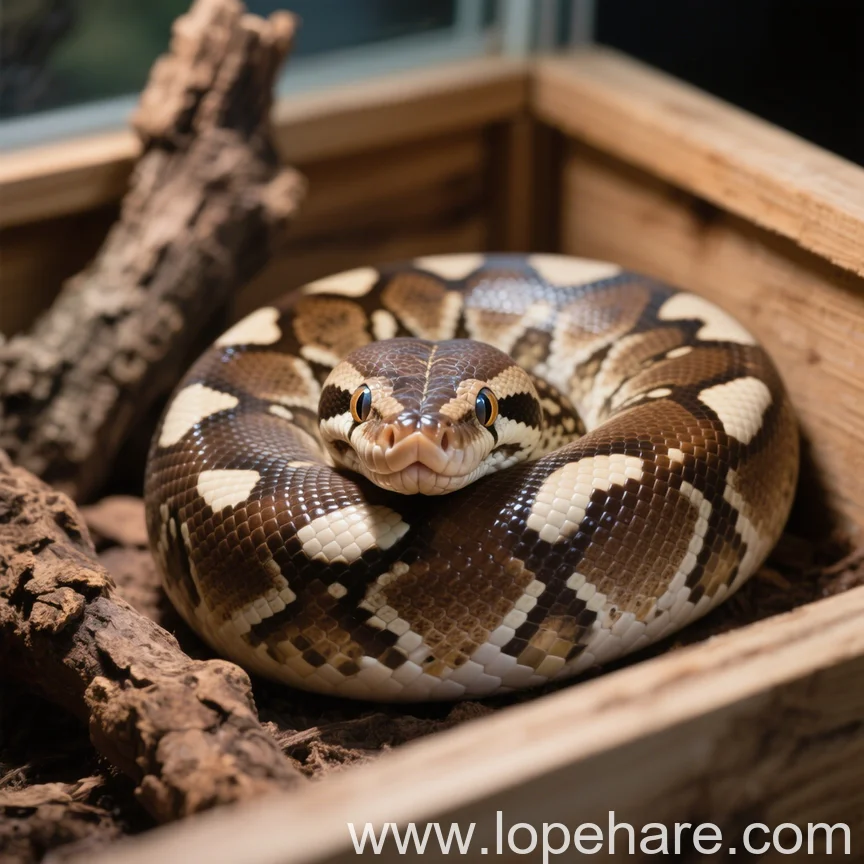
Feeding & Activity
It’s common for Ball Pythons to exhibit a reduced feeding response or even refuse meals during the cooler, drier months. This is a natural behavior linked to the seasonal cycle.
- Don’t panic if your snake skips a few meals, especially if it’s otherwise healthy and maintaining weight.
- Offer prey less frequently (e.g., every 10-14 days for adults instead of 7-10).
- Activity levels may decrease; they might spend more time in hides.
Note: Persistent, significant weight loss or signs of illness should never be attributed *solely* to seasonal changes. Consult a qualified reptile vet if concerned.
Summer Adjustments (Warmer/Wetter Period)
The rainy season in West Africa, typically from May to October, brings higher temperatures and significantly elevated humidity.
Temperature
During the warmer months, temperatures should lean towards the higher end of the acceptable range. This often requires less supplemental heating depending on your home’s ambient temperature, but monitoring is still essential.
- Basking Spot: Aim for 90-94°F (32-34°C).
- Cool Side: Maintain temperatures between 78-80°F (26-27°C).
- Nighttime: Nighttime drops should be minimal, staying above 75°F (24°C).
The primary challenge in summer isn’t usually providing heat, but managing it and preventing overheating, especially if using radiant heat sources in a warm room.
Humidity
Humidity becomes paramount during the “summer” period, mimicking the rainy season. High humidity is vital for healthy respiratory function and shedding.
- Aim for ambient humidity levels in the 70-80% range, with dips no lower than 60-65%.
- Achieve this through more frequent and thorough misting (potentially multiple times a day), using automated misting systems, or utilizing substrates that hold moisture effectively (like cypress mulch, coco coir, or sphagnum moss).
- While high humidity is desired, ensure adequate ventilation to prevent stagnant, saturated air, which can lead to mold growth and respiratory infections. A screen-top enclosure, combined with appropriate substrate depth and misting schedule, usually provides a good balance.

Monitoring for Overheating
High ambient temperatures combined with enclosure heating can quickly lead to dangerous overheating, which is a serious risk for Ball Pythons. Signs include restlessness, gaping (opening mouth), or seeking out the coolest possible spot persistently.
Serious Risk: Overheating is potentially fatal. Always use thermostats and monitor temperatures vigilantly, especially during heatwaves or warm summer months.
General Monitoring & Tips
Use of Thermometers/Hygrometers
You absolutely cannot manage seasonal adjustments effectively without accurate digital thermometers and hygrometers placed at multiple points in the enclosure (warm side, cool side, humid hide). Analog gauges are often unreliable. Check these readings daily.
Substrate Choice
Your choice of substrate plays a significant role in managing humidity seasonally. More absorbent substrates (like coco coir or sphagnum moss) help maintain higher humidity in summer, while less absorbent options (like cypress mulch or reptile bark, used with caution) might be easier to manage in winter, supplemented by humid hides.
Observation is Key
Beyond the numbers on your gauges, pay close attention to your snake’s behavior. Are they spending all their time in the humid hide? Is the cool side not cool enough? Are they restless? Your snake’s actions are often the best indicator of whether their environment is meeting their needs.
Conclusion: Adapting for Success
Adjusting your Ball Python’s habitat seasonally is a step towards providing truly optimal care that goes beyond basic survival. By mimicking the natural environmental fluctuations of their native West African home – providing a slightly cooler, drier environment in “winter” and a warmer, significantly more humid one in “summer” – you support their natural physiology and behaviors.
This practice requires diligent monitoring, reliable equipment, and a willingness to make subtle changes throughout the year. While it adds a layer of complexity, the reward is a healthier, more comfortable Ball Python. At lopehare, we believe that understanding these nuances is key to successful long-term husbandry for any niche pet, helping you provide the best possible life for your scaly companion.
References
For further reading on Ball Python natural history and care:
